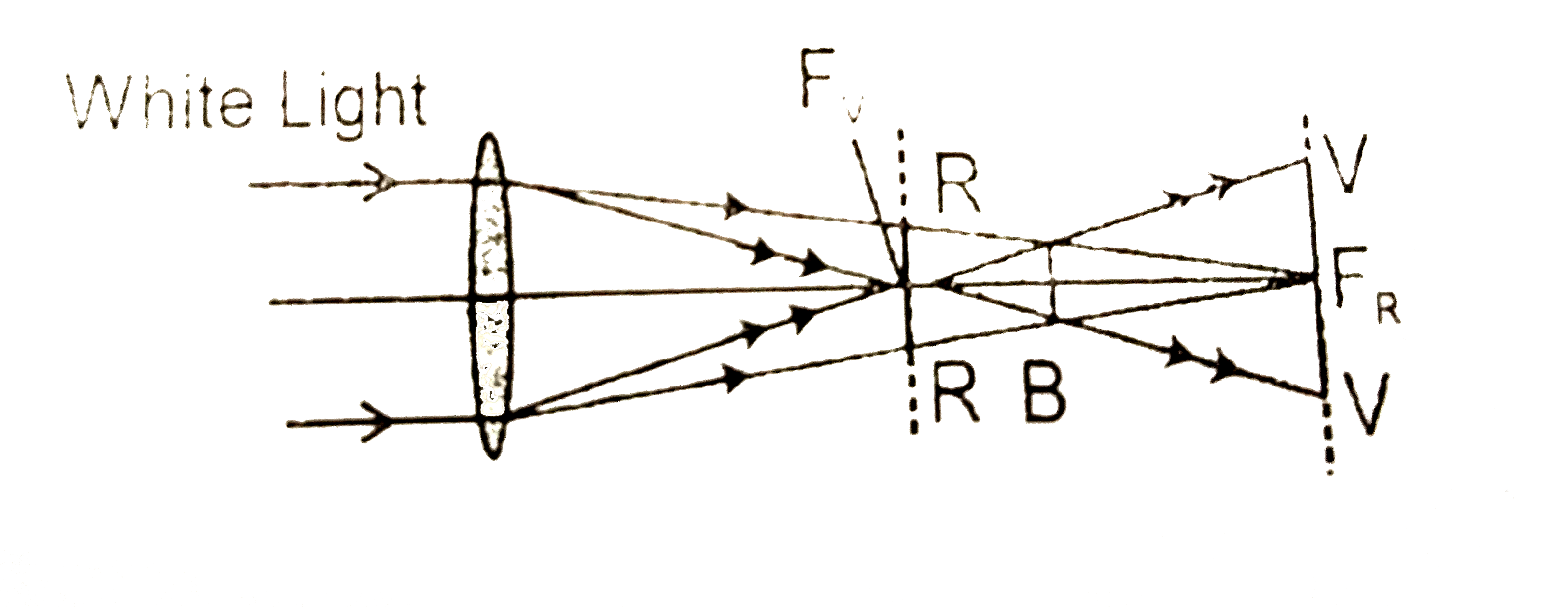Chromatic aberration of lens can be corrected by
Reducing its aperature
Proper polishing of its two surfaces
Suitably combining it with another lens
Providing different suitable curvature to its two surfaces
The correct Answer is:c
Step by step video, text & image solution for Chromatic aberration of lens can be corrected by by Physics experts to help you in doubts & scoring excellent marks in Class 12 exams.
Updated on:21/07/2023Topper's Solved these Questions
- RAY OPTICSBOOK - ERRORLESS CHAPTER - RAY OPTICSEXERCISE - Refraction of Light at Plane Surfaces
9 Videos
- RAY OPTICSBOOK - ERRORLESS CHAPTER - RAY OPTICSEXERCISE - Refraction at Curved Surface
8 Videos
- MAGNETISMBOOK - ERRORLESS CHAPTER - MAGNETISMEXERCISE - Assertion & Reason
1 Videos
- WAVE OPTICSBOOK - ERRORLESS CHAPTER - WAVE OPTICSEXERCISE - SET
23 Videos
Similar Questions
Find the magnitude of the chromatic aberrations of a lens made of flint glass, if the radii of curvature of both its surfaces are 0.5 m.We define the chromatic aberration as the difference between the focal lengths for the red and the violet rays. Find the ratio of the chromatic aberration to the average focal length of the lens.
View SolutionCan we observe chromatic aberration in the image formed by a plane mirror ?
View Solution
Knowledge Check
The image of a white object in with light formed by a lens is usually colored and blurred. This defect of image is called chromatic aberration and arises due to the fact that focal length of a lens is different for different colours. As R .I. μ of lens is maximum for violet while minimum for red, violet is focused nearest to the lens while red farthest from it as shown in figure.
As a result of this, in case of convergent lens if a screen is placed at Fv center of the image will be violet and focused while sides are red and blurred. While at FR , reverse is the case, i.e ., center will be red and focused while sides violet and blurred. The differece between fv and fR is a measure of the longitudinal chromatic aberration (L.C.A),i.e.,
L.C.A.=fR−fv=−df with df=fv−fR ...........(1)
However, as for a single lens,
1f=(μ−1)[1R1−1R2] .............(2)
⇒−dff2=dμ[1R1−1R2] ...............(3)

Dividing E1n. (3) by (2) :
−dff=dμ(μ−1)=ω,[ω=dμ(μ−1)]dispersive power,.........(4)
And hence, from Eqns. (1) and (4) ,
L.C.A.=−df=ωf
Now, as for a single lens neither f nor ω zero, we cannot have a single lens free from chromatic aberration.
Condition of Achromatism :
In case of two thin lenses in contact
1F=1F1+1F2i.c,.−dFF2=df1f21−df2f22
The combination will be free from chromatic aberration if dF=0
i.e.,df1f21+df2f22=0 which with the help of Eqn. (4) reduces to
ω1f1f21+ω2f2f22=0,i.e.,ω1f1+ω2f2=0........(5)
This condition is called condition of achromatism (for two thin lenses in contact ) and the lens combination which satisfies this condition is called achromatic lems, from this condition, i.e., form Eqn. (5) it is clear the in case of achromatic doublet :
Since, if ω1=ω2,1f1+1f2=0i.e.,1F=0 or F=∞
i.e., combination will not behave as a lens, but as a plane glass plate.
(2) As ω1 and ω2 are positive quantities, for equation (5) to hold, f1 and f2 must be of opposite nature, i.e., if one of the lenses is converging the other must be diverging.
(3) If the achromatic combination is convergent,
fC<fD and as fCfd=ωCωD,ωC<ωd
i.e., in a convergent achromatic doublet, convex lens has lesses focal legth and dispersive power than the divergent one.
Chromatic aberration of a lens can be corrected by :Aproviding different suitable curvatures of its two surfaces.Bproper polishing of its two surfaces.Csuitably conbining it with another lens.Dreducing its aperture.Spherical aberration in a thin lens can be reduced by
Ausign a monochromatic lightBusing a doublet combinationCusing circular annular make overy the lensDincreasing the size of the lensSpherical aberration in a thin lens can be reduced by
Ausing a monochromatic lightBusing a doublet combinationCusing a circular annular mark over the lensDincreasing the size of the lens
